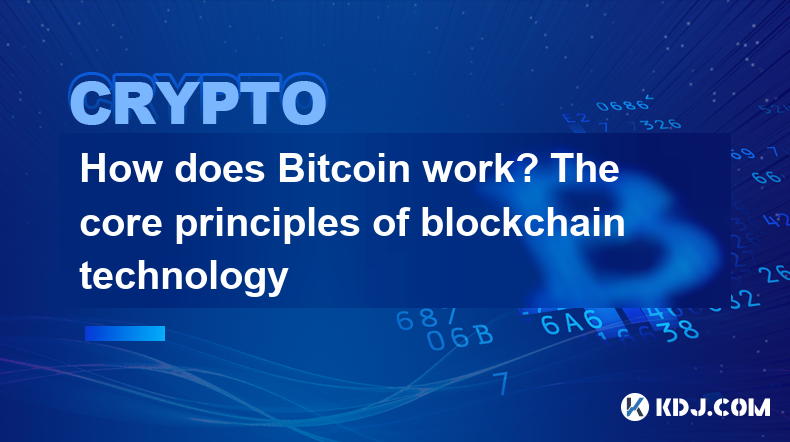-
 Bitcoin
Bitcoin $107,758.1435
-1.45% -
 Ethereum
Ethereum $2,490.6114
-3.32% -
 Tether USDt
Tether USDt $1.0004
0.00% -
 XRP
XRP $2.2042
-2.04% -
 BNB
BNB $651.4818
-1.12% -
 Solana
Solana $145.8782
-3.02% -
 USDC
USDC $0.9999
0.00% -
 TRON
TRON $0.2819
-1.39% -
 Dogecoin
Dogecoin $0.1621
-4.58% -
 Cardano
Cardano $0.5658
-4.18% -
 Hyperliquid
Hyperliquid $37.8181
-6.63% -
 Sui
Sui $2.8404
-4.91% -
 Bitcoin Cash
Bitcoin Cash $481.3703
-2.30% -
 Chainlink
Chainlink $13.0043
-4.79% -
 UNUS SED LEO
UNUS SED LEO $9.0464
0.26% -
 Avalanche
Avalanche $17.6115
-4.39% -
 Stellar
Stellar $0.2359
-2.11% -
 Toncoin
Toncoin $2.7507
-3.93% -
 Shiba Inu
Shiba Inu $0.0...01126
-4.41% -
 Litecoin
Litecoin $86.1256
-3.27% -
 Hedera
Hedera $0.1530
-3.13% -
 Monero
Monero $312.7785
-2.81% -
 Dai
Dai $1.0000
-0.01% -
 Ethena USDe
Ethena USDe $1.0001
-0.02% -
 Polkadot
Polkadot $3.3287
-5.55% -
 Bitget Token
Bitget Token $4.3840
-4.00% -
 Uniswap
Uniswap $6.8370
-10.63% -
 Pepe
Pepe $0.0...09548
-4.25% -
 Aave
Aave $260.2526
-6.11% -
 Pi
Pi $0.4658
-5.45%
How does Bitcoin work? The core principles of blockchain technology
Bitcoin, a decentralized digital currency, uses blockchain technology to enable secure, peer-to-peer transactions without intermediaries like banks.
Apr 10, 2025 at 08:21 pm

Bitcoin, the first and most well-known cryptocurrency, operates on a decentralized network using blockchain technology. Understanding how Bitcoin works involves delving into the core principles of blockchain, which is the underlying technology that makes Bitcoin and other cryptocurrencies possible. This article will explore the fundamental aspects of Bitcoin and the blockchain technology that powers it.
What is Bitcoin?
Bitcoin is a digital currency that enables direct peer-to-peer financial transactions without the need for intermediaries like banks. Created in 2009 by an anonymous person or group using the pseudonym Satoshi Nakamoto, Bitcoin was designed to be a decentralized form of money that operates on a secure and transparent network.
The Role of Blockchain in Bitcoin
At the heart of Bitcoin's operation is blockchain technology. A blockchain is essentially a distributed ledger that records all transactions across a network of computers. Each block in the chain contains multiple transactions, and once a block is added to the chain, it cannot be altered, ensuring the integrity and security of the data.
How Transactions Work in Bitcoin
When a user initiates a Bitcoin transaction, it is broadcast to the network of nodes (computers) that run the Bitcoin software. These nodes validate the transaction to ensure that the sender has the necessary funds and that the transaction adheres to the rules of the network. Once validated, the transaction is grouped with other transactions into a block.
Mining and the Creation of Blocks
The process of adding a new block to the blockchain is known as mining. Miners, who are participants in the network, use powerful computers to solve complex mathematical problems. The first miner to solve the problem gets to add the new block to the blockchain and is rewarded with newly minted bitcoins and transaction fees. This process not only creates new bitcoins but also secures the network by making it computationally expensive to alter past transactions.
The Consensus Mechanism
Bitcoin uses a consensus mechanism called Proof of Work (PoW) to ensure that all participants in the network agree on the state of the blockchain. PoW requires miners to expend computational power to solve the mathematical problems, and the solution must be verified by other nodes on the network. This consensus mechanism prevents double-spending and maintains the integrity of the blockchain.
Security and Decentralization
The decentralized nature of Bitcoin's network contributes to its security. Since the blockchain is maintained by a distributed network of nodes, there is no single point of failure. Additionally, the cryptographic algorithms used in Bitcoin transactions ensure that only the owner of the bitcoins can spend them, adding another layer of security.
Wallets and Private Keys
To interact with the Bitcoin network, users need a wallet, which is a software program that stores the private keys needed to access and manage their bitcoins. Private keys are essentially long strings of numbers and letters that are used to sign transactions, proving ownership of the bitcoins being spent. It is crucial for users to keep their private keys secure, as losing them can result in the permanent loss of their bitcoins.
The Role of Nodes
Nodes are crucial to the operation of the Bitcoin network. They store a copy of the blockchain and validate transactions and blocks. There are different types of nodes, including full nodes, which store the entire blockchain, and lightweight nodes, which rely on full nodes for certain data. The more nodes there are on the network, the more decentralized and secure the network becomes.
Transaction Fees and Network Congestion
When users send bitcoins, they can attach a transaction fee to incentivize miners to include their transaction in the next block. The fee is typically based on the size of the transaction and the urgency of the sender. During periods of high network congestion, users may need to pay higher fees to ensure their transactions are processed quickly.
The Bitcoin Protocol and Updates
The Bitcoin protocol is the set of rules that govern how the Bitcoin network operates. Changes to the protocol, known as updates or upgrades, are proposed and implemented through a process that involves the consensus of the network's participants. These updates can improve the functionality and security of the network but must be carefully managed to avoid disrupting the network.
Frequently Asked Questions
Q: How does Bitcoin maintain its value?
A: Bitcoin's value is maintained through a combination of factors, including its limited supply (capped at 21 million bitcoins), its utility as a medium of exchange, and the demand from investors and users. The decentralized nature of Bitcoin also contributes to its value, as it is not subject to the control of any single entity.
Q: Can Bitcoin transactions be reversed?
A: No, Bitcoin transactions are irreversible once they are confirmed on the blockchain. This is one of the key features of Bitcoin that ensures the security and finality of transactions.
Q: How does Bitcoin compare to traditional banking?
A: Bitcoin offers several advantages over traditional banking, including lower transaction fees, faster cross-border transfers, and greater privacy. However, it also has limitations, such as volatility and the lack of consumer protections that traditional banks provide.
Q: What is the environmental impact of Bitcoin mining?
A: Bitcoin mining consumes a significant amount of electricity due to the computational power required to solve the mathematical problems. This has led to concerns about the environmental impact of Bitcoin. However, efforts are being made to use more sustainable energy sources for mining, and some argue that the energy consumption is justified by the security and decentralization it provides.
Disclaimer:info@kdj.com
The information provided is not trading advice. kdj.com does not assume any responsibility for any investments made based on the information provided in this article. Cryptocurrencies are highly volatile and it is highly recommended that you invest with caution after thorough research!
If you believe that the content used on this website infringes your copyright, please contact us immediately (info@kdj.com) and we will delete it promptly.
- Bitcoin's Pattern Break: Are HODLers the Key to the Next Surge?
- 2025-07-04 18:50:12
- Bitcoin Price, Trump's Bill, and the $150K Dream: A NYC Take
- 2025-07-04 19:50:12
- Ethereum, LILPEPE, and the July Bounce: Will Pepe Steal ETH's Thunder?
- 2025-07-04 19:10:12
- Binance Institutional Loans: Unlocking 4x Leverage and Zero Interest for Whales
- 2025-07-04 19:15:12
- Bitcoin Bull Run: Analysts Eye Peak in Late 2025?
- 2025-07-04 19:20:13
- Pepe Indicators, Bullish Forecast: Can the Meme Coin Rally?
- 2025-07-04 19:25:12
Related knowledge

What is the Woodies CCI indicator and can it be used for Bitcoin?
Jul 04,2025 at 05:14pm
Understanding the Woodies CCI IndicatorThe Woodies CCI indicator is a variation of the traditional Commodity Channel Index (CCI), which was originally developed by Donald Lambert. The standard CCI measures the current price level relative to an average price over a given period, typically 14. However, the Woodies version modifies this calculation to mak...

How to use the Volume-Weighted Average Price (VWAP) bands for Bitcoin?
Jul 04,2025 at 04:28pm
Understanding the Basics of VWAP BandsThe Volume-Weighted Average Price (VWAP) is a key metric used in trading to determine the average price at which an asset, such as Bitcoin, has traded throughout the day. It takes into account both volume and price, making it more reliable than a simple moving average. VWAP bands are essentially standard deviation c...

What is the VWAP indicator and how to use it for Bitcoin?
Jul 04,2025 at 05:28pm
Understanding the VWAP IndicatorThe VWAP (Volume Weighted Average Price) is a technical analysis tool used to determine the average price a cryptocurrency has traded at throughout the day, based on both volume and price. It provides traders with insights into the true average value of an asset by giving more weight to periods where trading volume was hi...

How to read Bitcoin candlestick charts for beginners?
Jul 04,2025 at 11:22am
Understanding the Basics of Candlestick ChartsCandlestick charts are a popular tool used in cryptocurrency trading to analyze price movements. Each candlestick represents a specific time period, such as one minute, five minutes, or even one day. For beginners, understanding how to interpret these charts is crucial for making informed trading decisions. ...

What is the role of Satoshi Nakamoto in Bitcoin?
Jul 04,2025 at 03:14am
Who is Satoshi Nakamoto?Satoshi Nakamoto is the pseudonymous individual or group responsible for creating Bitcoin, the world's first decentralized digital currency. Despite extensive research and speculation, the true identity of Satoshi Nakamoto remains unknown. The name was used in communications related to the development and release of the Bitcoin w...

What is the Bitcoin whitepaper?
Jul 04,2025 at 01:42am
What is the Bitcoin Whitepaper?The Bitcoin whitepaper is a foundational document published in 2008 by an individual or group using the pseudonym Satoshi Nakamoto. Titled 'Bitcoin: A Peer-to-Peer Electronic Cash System', it outlines the theoretical framework and technical specifications for creating a decentralized digital currency. This paper introduced...

What is the Woodies CCI indicator and can it be used for Bitcoin?
Jul 04,2025 at 05:14pm
Understanding the Woodies CCI IndicatorThe Woodies CCI indicator is a variation of the traditional Commodity Channel Index (CCI), which was originally developed by Donald Lambert. The standard CCI measures the current price level relative to an average price over a given period, typically 14. However, the Woodies version modifies this calculation to mak...

How to use the Volume-Weighted Average Price (VWAP) bands for Bitcoin?
Jul 04,2025 at 04:28pm
Understanding the Basics of VWAP BandsThe Volume-Weighted Average Price (VWAP) is a key metric used in trading to determine the average price at which an asset, such as Bitcoin, has traded throughout the day. It takes into account both volume and price, making it more reliable than a simple moving average. VWAP bands are essentially standard deviation c...

What is the VWAP indicator and how to use it for Bitcoin?
Jul 04,2025 at 05:28pm
Understanding the VWAP IndicatorThe VWAP (Volume Weighted Average Price) is a technical analysis tool used to determine the average price a cryptocurrency has traded at throughout the day, based on both volume and price. It provides traders with insights into the true average value of an asset by giving more weight to periods where trading volume was hi...

How to read Bitcoin candlestick charts for beginners?
Jul 04,2025 at 11:22am
Understanding the Basics of Candlestick ChartsCandlestick charts are a popular tool used in cryptocurrency trading to analyze price movements. Each candlestick represents a specific time period, such as one minute, five minutes, or even one day. For beginners, understanding how to interpret these charts is crucial for making informed trading decisions. ...

What is the role of Satoshi Nakamoto in Bitcoin?
Jul 04,2025 at 03:14am
Who is Satoshi Nakamoto?Satoshi Nakamoto is the pseudonymous individual or group responsible for creating Bitcoin, the world's first decentralized digital currency. Despite extensive research and speculation, the true identity of Satoshi Nakamoto remains unknown. The name was used in communications related to the development and release of the Bitcoin w...

What is the Bitcoin whitepaper?
Jul 04,2025 at 01:42am
What is the Bitcoin Whitepaper?The Bitcoin whitepaper is a foundational document published in 2008 by an individual or group using the pseudonym Satoshi Nakamoto. Titled 'Bitcoin: A Peer-to-Peer Electronic Cash System', it outlines the theoretical framework and technical specifications for creating a decentralized digital currency. This paper introduced...
See all articles

























































































